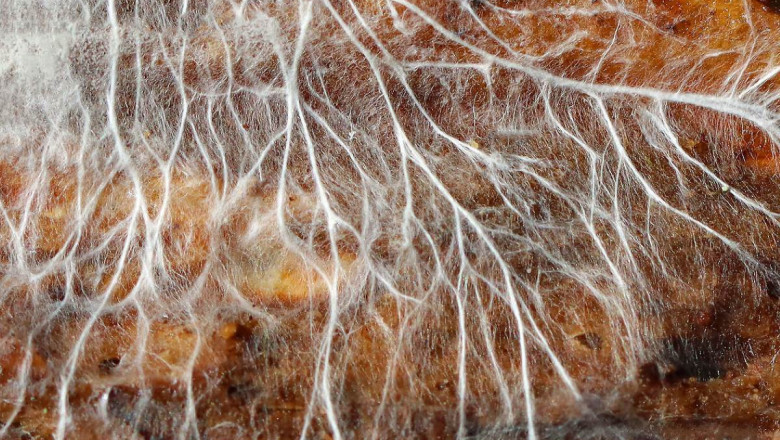views
Mycelium, the intricate root-like network of fungi, is no longer just a natural marvel hidden beneath the forest floor. Today, it is at the forefront of a sustainability revolution, inspiring breakthrough innovations across multiple industries. While many people are aware of mycelium’s role in eco-friendly packaging or vegan leather, the Mycelium Market is rapidly expanding with surprising and cutting-edge applications that are reshaping how we think about materials, food, and even technology.
Here’s a closer look at some of the most exciting and lesser-known innovations in the mycelium market that are pushing boundaries in 2025.
1. Mycelium in Biodegradable Electronics
One of the most unexpected frontiers for mycelium is in the electronics sector. Researchers are developing mycelium-based substrates and casings that are fully biodegradable and flame-retardant. Unlike conventional plastics used in gadgets, mycelium components can break down naturally after their lifecycle, drastically reducing electronic waste.
This innovation is not only environmentally beneficial but also offers unique physical properties, such as lightweight durability and natural insulation, making mycelium an attractive option for sustainable electronics manufacturing.
2. Mycelium as Soil Remediation Agents
Beyond material uses, mycelium is proving invaluable in environmental cleanup. Certain fungi species have the ability to absorb heavy metals and toxins from contaminated soil—a process called mycoremediation. This green technology harnesses mycelium’s natural decomposition power to detoxify industrial sites, oil spills, and polluted waterways.
Companies specializing in bioremediation are partnering with environmental agencies to scale these applications, turning mycelium into a frontline defender of ecosystems while opening new commercial avenues within the Mycelium Market.
3. Mycelium-Based Building Materials for Disaster Relief
Innovators have created mycelium composites that are inexpensive, fast-growing, and fire-resistant—perfect for constructing temporary shelters in disaster zones. Unlike conventional materials, mycelium bricks can be grown onsite using agricultural waste, reducing transportation costs and environmental impact.
This technology offers an eco-friendly and scalable solution to humanitarian crises, providing sustainable housing options where they are most urgently needed.
4. Living Mycelium Packaging
An emerging trend within the Mycelium Market is the concept of “living packaging.” Instead of packaging that is simply biodegradable, living mycelium packaging remains biologically active and can continue to adapt and self-heal minor damages during product transport.
This approach not only extends the protective qualities of packaging but also introduces a novel form of biomimicry in commercial materials—offering potential for smarter, more sustainable logistics solutions.
5. Mycelium Textiles with Enhanced Properties
While mycelium leather is already gaining attention, recent advances have produced mycelium textiles that are breathable, water-resistant, and antimicrobial without chemical treatments. These fabrics offer performance benefits for sportswear, outdoor gear, and medical textiles, combining natural comfort with functional durability.
Such innovations are accelerating adoption within the textile industry, especially as brands seek sustainable alternatives that meet high-performance standards.
6. Mycelium in Carbon Capture and Climate Solutions
Mycelium’s ability to grow rapidly while sequestering carbon has led to its exploration as a biological carbon capture agent. Some startups are investigating large-scale mycelium farms that could act as natural carbon sinks, helping industries offset emissions.
This not only bolsters the environmental credentials of mycelium-based products but also positions the Mycelium Market as part of broader climate change mitigation strategies.
7. Mycelium-Derived Biofuels and Bioplastics
Scientists are developing methods to convert fungal biomass into biofuels and bioplastics. Unlike fossil fuels, these biofuels are renewable and emit fewer greenhouse gases. Similarly, mycelium-based bioplastics offer a sustainable alternative to petroleum-derived plastics with the added advantage of biodegradability.
These developments hold promise for reducing dependency on non-renewable resources and promoting a circular bioeconomy.
Conclusion: A Frontier of Endless Potential
The Mycelium Market is much more than a source of eco-friendly packaging or vegan leather—it is a dynamic field of innovation with far-reaching implications across technology, environmental science, construction, and beyond. These cutting-edge uses highlight mycelium’s versatility and its potential to disrupt traditional industries in sustainable ways.
For entrepreneurs, investors, and innovators, exploring these emerging applications offers a unique opportunity to be part of the next wave of bio-based solutions that address some of the world’s most pressing challenges.






















Comments
0 comment